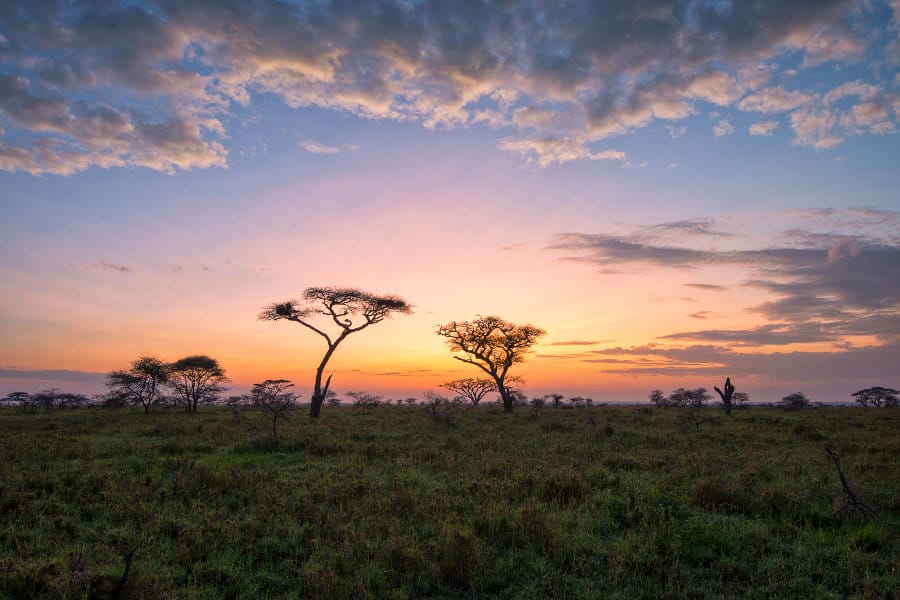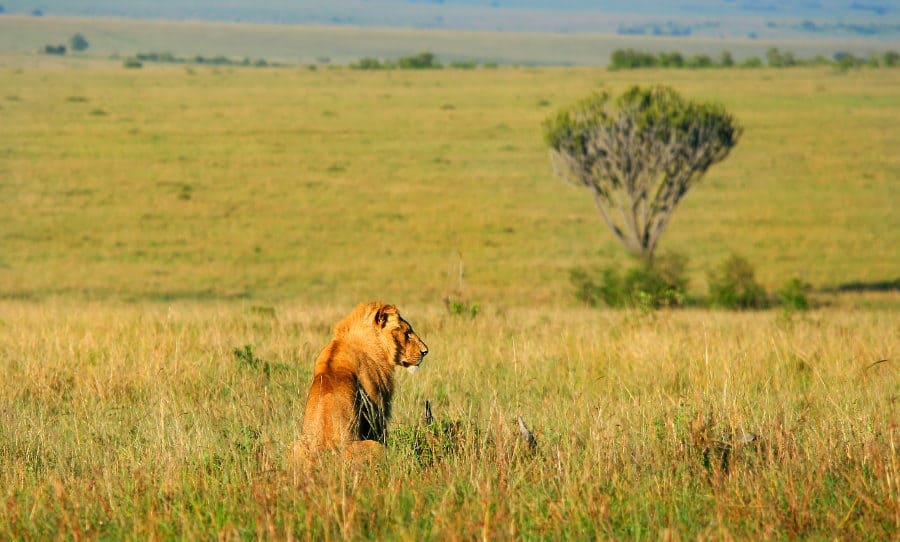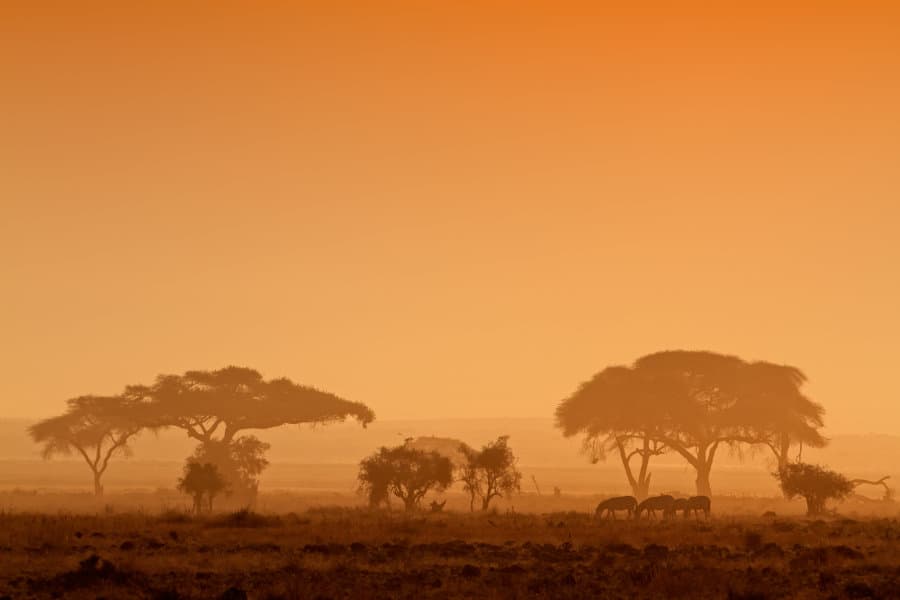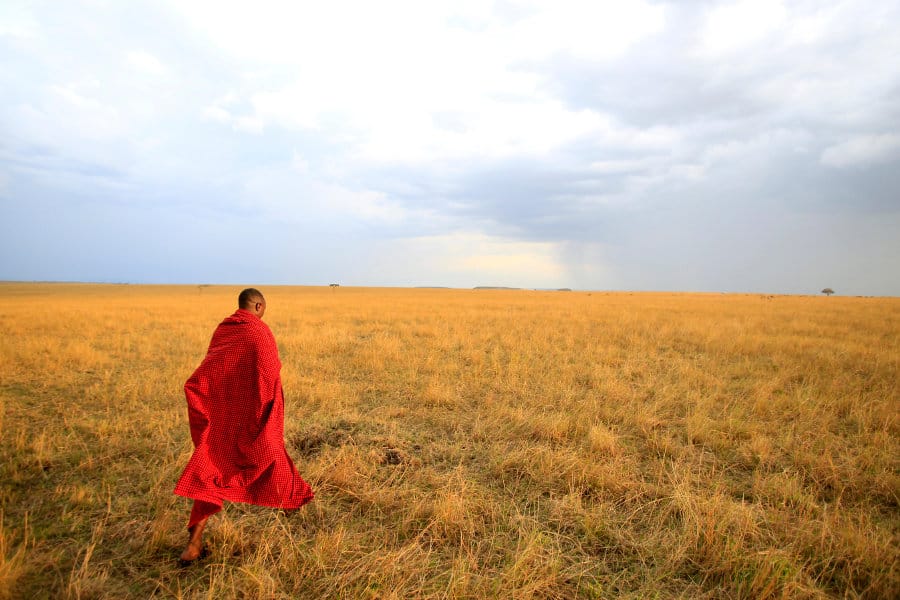The plains of Africa are where magic happens. Wildlife congregates in enormous numbers, creating some of the world’s most magnificent natural spectacles.
These plains of Africa provide habitat for a diverse community of wildlife, that interacts to form a complex and fascinating food web.
Antelope graze on the plains of Africa and predators hunt their prey. There are times of abundance, with food and water for everything. Then times of dust and drought, when all the wildlife struggles.
The African plains ecosystem is a tropical grassland with warm temperatures year-round and seasonal rainfall.
Vegetation comprises of grasses and small, dispersed trees that do not form a closed canopy, thereby allowing sunlight to reach the ground.
Serengeti – Home of the Great Wilderness Migration

Located in northern Tanzania, the Serengeti ecosystem spans 30,000 square kilometres and is one of Africa’s most iconic plains. Grass extends in all directions and there are more big cats here than anywhere else on the continent.
The Serengeti boasts a high diversity of wildlife thanks to its diverse habitats, that include riverine forests, kopjes, swamps, grasslands and woodlands. It’s one of Africa’s ultimate safari destinations.
It is dominated by wildebeest and zebra. Around 1.5 million of them migrate around the Serengeti plains each year, part of an annual spectacle you can read more about here.
Hundreds of thousands of blue wildebeest won’t complete their journey, as crocodiles and other predators have a feast waylaying the herbivores.
This amazing spectacle is one of the largest animal migrations in the world, and one of the Seven Natural Wonders of Africa.
Maasai Mara – The Kingdom of Lions
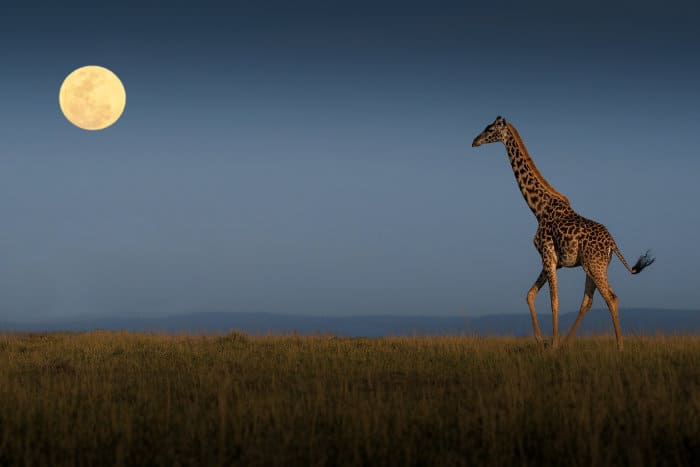
Spanning 1,510 square kilometres, the Maasai Mara is a game reserve located in the south west of Kenya, contiguous with the Serengeti.
This plain is mostly open grassland with small seasonal rivers. Trees and shrubs fringe drainage lines and cover the hilltops and slopes. To the south-east, there are clumps of acacia trees.
The Mara is named in honour of the Maasai people, who are its ancestral inhabitants. The Maasai are strongly independent people who still value tradition and ritual as an integral part of their everyday lives.
Traditionally, the Maasai rarely hunt and live alongside wildlife in harmony, as part of their cultural beliefs. This unique co-existence of man and wildlife makes the Mara one of the world’s most unique wilderness regions.
Lions are among the animals that the Maasai share these plains of Africa with. The regal and powerful hunters dominate the Mara, accompanied by very healthy collections of leopards and cheetahs.
Kafue – Unspoiled Nature Perfect for Adventure
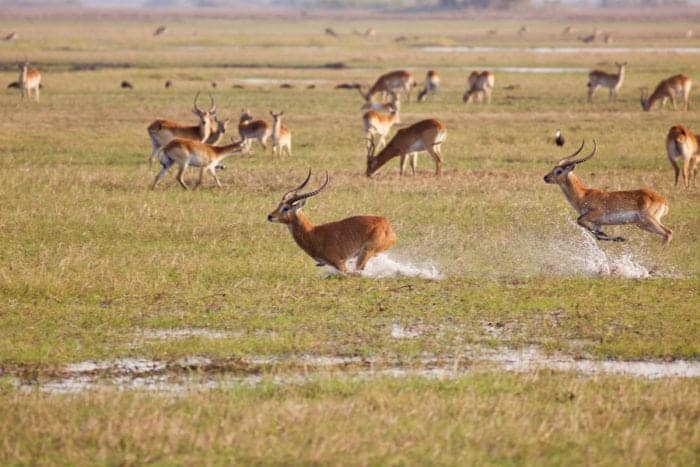
Kafue is Zambia’s oldest and largest national park. It is also Africa’s second largest park, although it remains off the beaten path. The park is named after the Kafue River, the life-giving water source flowing through it.
Kafue’s vegetation is characterized by savannah grasslands and scatterings of miombo trees. The south is dotted with sparse mopane woodlands, while a thin belt of evergreen teak forest lines the banks of the Kafue River.
The jewel in Kafue’s crown is the remote Zambezi-flooded grasslands in the north known as the Busanga Plains. It is to these plains of Africa that animals migrate during the dry months, offering amazing game viewing opportunities.
Kafue has the largest diversity of animals among Zambian parks. Lions are widespread across the park and it’s also one of the last strongholds of the African wild dog.
Kalahari – A “Waterless Place” of Wonder

Covering 900 000 square kilometres, the Kalahari basin is the world’s largest continuous stretch of sand, extending from the Orange River up to the Democratic Republic of the Congo.
The region occupies most of Botswana, parts of Namibia and areas of South Africa.
In addition to large open grasslands, the region is largely covered in semi-arid shrub and scrub.
There are small patches of acacia woodland and large areas of terminalia sandveld. Pans are widespread and sometimes develop into wetlands following heavy rains.
The Kalahari harbours concentrated populations of threatened species such as the brown hyena, along with diverse birds of prey.
The park is unique for having species adapted to drier conditions, which are able to survive many months without surface water, such as desert-adapted antelopes.
But the Kalahari’s star attraction is the legendary black-maned lion – the world’s largest species of lion.
These plains of Africa also offer some of the world’s best cheetah viewing. And while this is a waterless place of wonder, the Okavango Delta flows through the Kalahari and brings life to the plains.
Mana Pools – The Magnificent Floodplain of Africa
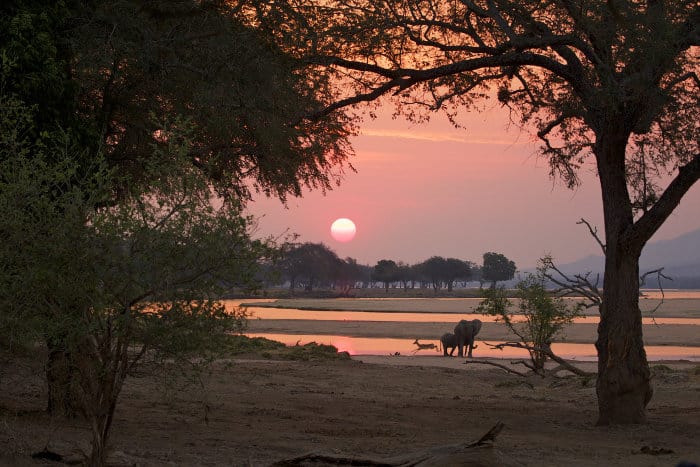
Mana Pools is a wildlife conservation area in northern Zimbabwe and one of Africa’s best-kept safari secrets.
Mana translates to four in the local Shona dialect, and the park derives its name from the four large pools formed by the meandering Zambezi River.
After every rainy season, the Mana Pools floodplain is transformed into a broad expanse of oxbow lakes that are perfect for canoe trails and walking safaris.
Notably, Mana Pools is one of the only big-game national parks in Africa in which you can walk freely without being accompanied by a guide.
As the lakes gradually dry up and recede, these plains of Africa attract many mammals in search of water, including the endangered African wild dog. Mana Pools has one of the highest densities of wild dogs in Africa.
Kruger – A Birder’s Paradise

Stretching across three countries, the Kruger plains are one of Africa’s oldest and best preserved safari wildernesses.
These plains of Africa occupy the provinces of Limpopo and Mpumalanga in South Africa, then continue into Zimbabwe and Mozambique.
Kruger is so vast it features multiple ecosystems distinguished by four veld types: marula, mopane, knob-thorn tree and red bushwillow veld.
The park is just one part of these plains as the Greater Kruger ecosystem continues for tens of thousands of square kilometres.
It is home to all the big five animals: buffalo, elephant, leopard, rhino and lion. And, at 147 species, the national park boasts more species of large mammals than any other game reserve or national park in Africa.
With 517 bird species, Kruger is also a true birder’s paradise that offers some of the top birding spots in the world.
Notable bird species include the endangered big six – the southern ground hornbill, martial eagle, kori bustard, Pel’s fishing owl, lappet-faced vulture and saddle-billed stork.
Discovering the Plains of Africa on a Safari
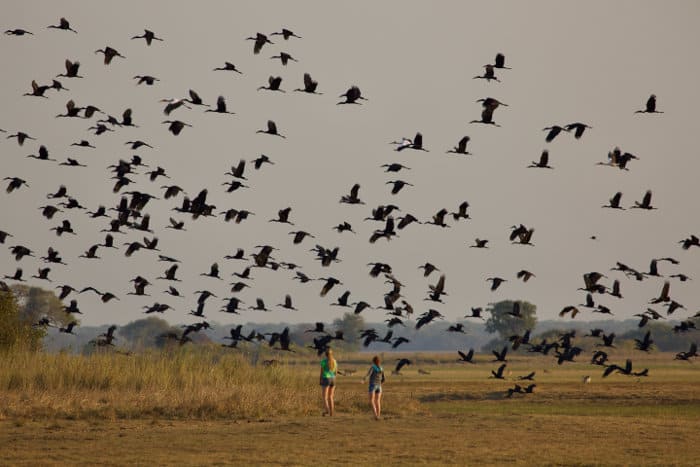
Once you visit the plains of Africa, you are forever changed. They just seem to have a magnetic pull that draws you back time and again.
So plan your visit to the plains of Africa now, while they are still pristine with abundant wildlife!
